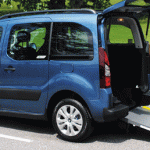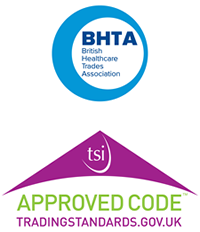
Like many we use a normal estate car to go about our daily routines and when needs be a wheelchair can be put in the boot with ease and it is no great inconvenience. Others who are less independent and who are both wheelchair users and drivers may well be fortunate enough to have a wheelchair accessible car that has been adapted to provide for those disabilities and to cater for the wheelchair with ease. Most of these vehicles server a valuable job and do so with ease, so what makes these vehicles so special and is there and formal approval required ?
In a world where there are stats for everything we do, it seems that there are no official statistics or records when it comes to safety of those in wheelchairs when travelling in wheelchairs. But when it comes to adapting a wheelchair accessible vehicle there are many regulations in place to ensure that they comply to some fairly strict rules.
Some of these rules are inherited via the EC and this includes the European Community Whole Vehicle Type Approval or ECWVTA as it is referred to and these tests ensure that WAVs are compliant and that their wheelchair passengers are safe.
Most wheelchair accessible vehicles on the UK roads are adapted versions of standard cars that are available to the UK market. The adaptation process is quite involved and generally includes both the passenger compartment aspect and the accessibility aspect i.e. the ramp on which the wheelchair travels to enter the vehicle.
For more information you can visit the here http://www.wavca.co.uk the trade association for manufacturers of wheelchair accessible vehicles
When a WAV manufacturer adapts a new model then there are several stringent tests that have to be satisfied before it is deemed safe for use with occupants in a wheelchair. These include physical tests on the seatbelt anchorage points, testing of the seat strength and more testing of the wheelchair restraint systems that literally keep the wheelchair in place during a journey and in worse scenario in an impact from a collision. To ensure fair governance, these tests are always carried out at an approved testing facility and independently witnessed by the government’s vehicle certification agency.
These tests are essential and give you the wheelchair user the peace of mind and confidence needed to use a specially adapted vehicle. Once a new vehicle model has been approved there is a follow-up process called COP or Conformity of Production that is in place to ensure that all other wheelchair adapted models of the same type continue to meet the stringent standards laid out.
So once such a vehicle has been designed and created we can be confident that it meets certain criteria required for safe use by a wheelchair user which include good access by wheelchair, safe transit of the user which includes structural integrity of the entire vehicle making sure that all occupants are as safe as they would be in a non-adapted car.
This compliance is referred to by its code which is PAS2012 and includes all the WAV Industry Guidelines Adopted by Motability. These need to be in place in the following situations:
- You are a wheelchair user who needs to travel in your chair
- You are a local authority, health service or care home, which provides transport for wheelchair users
- You are a taxi company or community transport service
- You are an organisation which provides information to people with mobility difficulties












